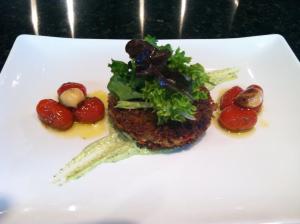 The American diet as it relates to calories has actually changed very little over the past 80 years. There has been a switch from a high carbohydrate and animal fat diet in the past, to a high vegetable fat based, higher protein diet in more recent years. We also have the addition of increased fiber, understanding of healthy fats, as well as an increase in raw vegetable and fruit consumption. This shift, specifically over the last 40 years, does not proportionally match the increase in the obesity problem. So what is the cause?
The American diet as it relates to calories has actually changed very little over the past 80 years. There has been a switch from a high carbohydrate and animal fat diet in the past, to a high vegetable fat based, higher protein diet in more recent years. We also have the addition of increased fiber, understanding of healthy fats, as well as an increase in raw vegetable and fruit consumption. This shift, specifically over the last 40 years, does not proportionally match the increase in the obesity problem. So what is the cause?
Due to the breakthroughs in technology, the average calorie expenditure of individuals has DRASTICALLY decreased, especially starting in the 80’s. A reduction in jobs requiring manual labor, new modes of transportation, and a huge increase in the tech. industry has wiped out the need for the population to get their hands dirty, focusing more on computer skills and less on physical activity, as well as the use of things like the internet, TV, and video games. (For the record, I love the internet, TV, and video games.) This basically means that the diets of the average person has remained relatively unchanged (with a slow and steady caloric increase,) while our way of life has drastically reduced general physical activity. In the 60’s over half of the private jobs required some kind of manual labor, but now it is less than 16%.
Although red meat still reigns supreme in the US diet over the past years, chicken consumption increased drastically since the 1970’s as did the average fruit and vegetable daily intake. Although the vegetable and salad oil use has increased a good amount over this same time period, most likely due to the availability of fried foods and snacks, the use of butter and margarine spreads at meal times has decreased along with a huge swing from whole milk to lower fat varieties. There has been an obvious increase in carbohydrate consumption over the years due to things like HFCS as well, but as stated before, this does not proportionately reflect the skyrocketing obesity rates. Also, the diets of previous years had a larger portion of calories coming from carb. sources like breads, pasta, white rice and potatoes.
Americans have drastically increased in eating out as opposed to cooking at home, but the options available at restaurants have shifted to healthier options, even if a good portion of consumers still do not choose them. The American consumer also forged the path to larger portion size. They demanded greater value and their purchasing habits reflected this, however the actually content of the food has remain steady of the years, which supports the fact that the food industry should not be directly to blame for this obesity epidemic, but the US lifestyle should. Just like any industry, it reacts to the purchasing habits of its consumers, and the food industry is no exception. That being said, the food industry could defiantly do a better job in promoting low calorie, fresher foods.
I just want to leave you with one more interesting fact…the average person is now 33 pounds heavier then they were in the 60’s and also burn almost 200 less calories a day, which can account for almost 60% of those extra pounds. Add just a bit more of physical activity, we can start shedding the weight.










